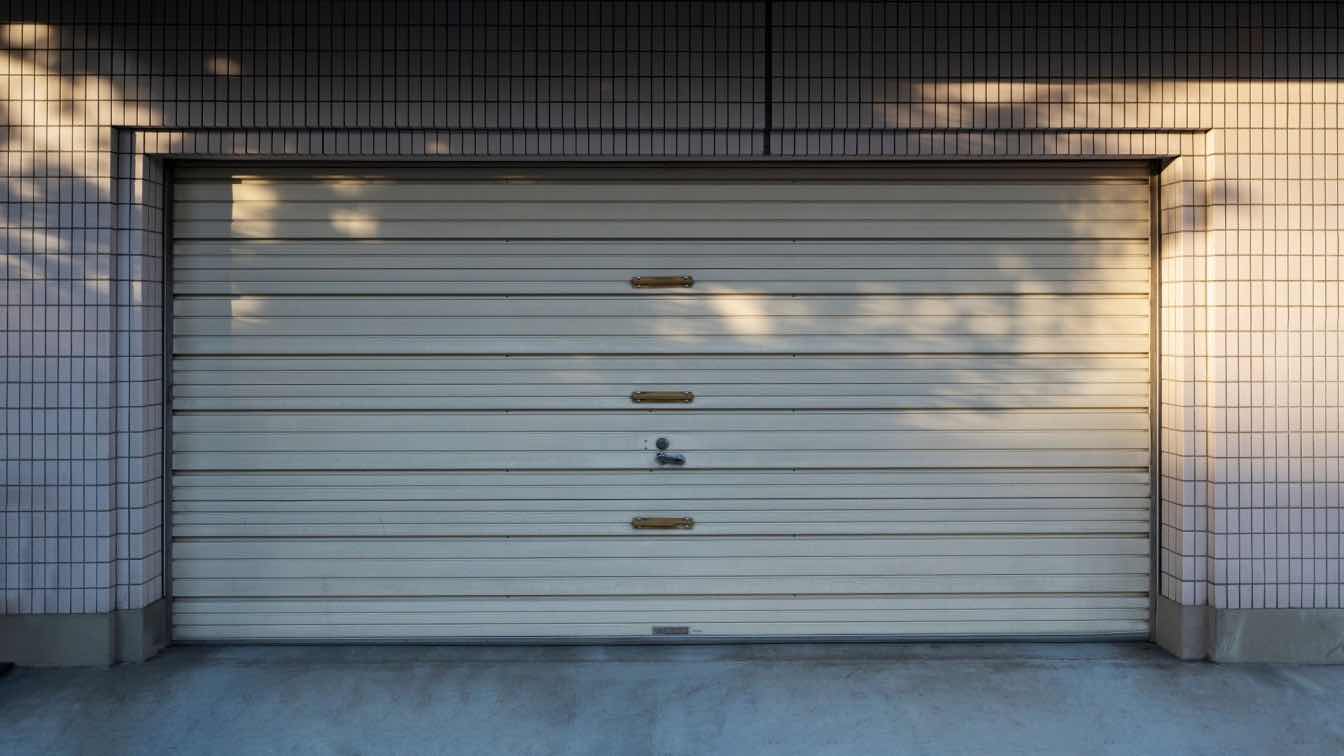Have you ever experienced one of those mornings when you're already behind schedule and your garage door decides it won't move an inch right before your eyes? It's annoying, isn't it? You are not alone, though.
Despite being a necessity, garage doors can be real drama queens, springing surprises on you. How about we attempt some DIY magic instead of letting it spoil your day or considering spending a fortune on repairs?
This guide is all about providing you with ideas and tactics for resolving common garage door difficulties without emptying your wallet. From loud operations to recalcitrant doors that refuse to close, we've got you covered. And, if things get too hairy, we'll notify you when it's time to bring in the professionals. Let's roll up our sleeves and turn those frustrations into achievements!
Understanding Your Garage Door System
Before we get started, let's get up close and personal with your garage door. Understanding its components is like to being acquainted with the members of your band before to performing. Whether it swings up in one piece or rolls up in pieces, each style of garage door has its own set of characteristics and functions.
The Main Players
The Door: This is the highlight of the show. It might be a heavyweight champion constructed of wood, steel, or fiberglass, swinging or rolling up.
The Opener: Think of this as the door's best friend. The electric motor causes the door to move up or down. Without it, you are the opener.
Springs: They are the unsung heroes. Garage door springs do the heavy lifting, leaving the door light enough for the opener to handle.
Tracks and Rollers: Consider them the road and wheels for your entrance. The tracks direct the door's movement, while the rollers make it slide smoothly.
Sensors: These are the door's eyes that ensure it stops if something (or someone) gets in the way. Safety first!
Types of Garage Doors
Now let's go a little more precise. Your garage door might be one of the following types:
Roll-Up: The most typical style, consisting of parts that wrap around a drum above the door opening.
Swing-Up: A sturdy object that swings upward and outward. It's old school, yet it still exists.
Swing-Out: The elegant doors that open like your car's doors, commonly found in garages with extra room.
Sliding: They move to one side, making them ideal for garages with limited ceiling space.
Knowing these elements and types can help you identify potential problems and where to search for them. You'll be able to identify problems before you start making fixes, just like a detective would. And it's very enjoyable to work as a garage door investigator!
Safety First: Gearing Up for DIY Garage Door Repairs
It's time to unleash our inner safety superheroes because, when it comes to do-it-yourself projects, being cautious is your superpower. Although handling a garage door may not seem like a high-stakes action movie, you should nonetheless treat it with respect and be mindful of its safety.
Before getting into the specifics of DIY repairs, here's how to prepare and safeguard yourself:
Dress for Success
Protective Gear: Safety glasses are required since, let's be honest, no one looks good with a garage door spring in their eye. Gloves? Non-negotiable. They will protect your hands from sharp edges and provide a stronger grip.
Comfortable Clothing: Wear something you don't mind getting soiled, but make sure it fits properly. Baggy garments and hanging jewelry are out—they're simply too eager to make friends with moving things.
Power Down
Disconnect the Opener: Make sure your garage door won't suddenly come to life before tinkering with it. It is equivalent to putting it in sleep mode to disconnect the opener.
Tool Time
Appropriate Tools for the Job: Are all of your tools organized? Fantastic! It's not only about productivity when using the proper tools—it's also about safety. An easy task may become dangerous with the wrong instrument.
Know Your Limits
Manual Override: Learn how to operate the manual override on your garage door. In the event that the power goes out or the opener decides to take an unplanned break, you may use this useful function to manually operate the door.
Buddy System
Don't Go Solo: Having an additional pair of hands is not only handy for some chores, but it is also safer. A do-it-yourself friend may be invaluable when it comes to holding a ladder or watching out for moving parts.
The Clear Path
Workspace Housekeeping: Maintain a tidy and organized workstation. A simple maintenance might become an emergency room visit if you fall over equipment or slide on anything while operating a large garage door.
Remember that the purpose of this is to fix your garage door, not to leap from a ladder and win yourself a superhero cape. If you take these safety measures properly, there won't be any unexpected narrative twists and you may enjoy the pleasure of a work well done.
Common Garage Door Problems and DIY Solutions
Handling the world of garage door maintenance may be like deciphering a puzzle. But do not be afraid! With a little knowledge and elbow grease, you can handle most problems on your own.
Let's look at some typical garage door issues and how to resolve them without breaking the bank.
The Door Plays Hard to Get (Won't Open or Close)
Symptoms: Your garage door has gained a mind of its own, refusing to move or moving only partially.
Remote Control Problems: Occasionally, the issue might be as straightforward as your remote not working properly or being out of range. Replace the battery or take a closer look to see if that clarifies the riddle.
Opener Obstacles: Inspect whether a roving vacuum cleaner or an inquisitive pet disconnected the power cable of the opener. Reconnect and give it another go.
The Odd Case of the Misaligned Sensors: Check the safety sensors if your door begins to close and then reverses. Verify that they are unobstructed, spotless, and aimed squarely at one another.
The Squeaky Wheel Gets the Grease (Noisy Operations)
Symptoms: Every time it moves, your garage door gives you a charming show of grinds, squeaks, or rumbles.
Lubrication Station: Lubricate the springs, rollers, and hinges using silicone-based lubricant (never WD-40; that stuff is a cleaner, not a lubricant). Like a spa day for your door, that is.
Tightening Time: Using a socket wrench, snug up the nuts and bolts firmly yet gently. Just be careful—tightening too much might cause extra problems.
Off the Rails (Door is Off Its Tracks)
Symptoms: Your door appears to be attempting to move away from its position.
Resuming: Firstly, disconnect the opener (prioritizing safety!). Return the door to its rails with gentle movement. You might need to use some muscle for this, so if you need an additional pair of hands, think about hiring a DIY friend.
Aligning and Tightening: Inspect for any loose hardware and adjust as necessary. Measure the lengths between the tracks and make adjustments until they are parallel to ensure appropriate alignment.
Spring Into Action (Broken Springs)
Symptoms: A broken spring is indicated by a loud crash and a door that won't rise.
Proceed with Caution: Replace springs carefully since they are under a lot of stress, which can be harmful. It may be time to bring in an expert if you're not entirely at ease. If you're skilled and prepared, though, make sure you have the right replacement springs and closely adhere to a comprehensive guide.
Opener Antics (Malfunctioning Opener)
Symptoms: Your opener is refusing to execute its one task because it is on strike.
Reset and Reconnect: Occasionally, a quick reset is all your opener needs. After a minute of unplugging, plug it back in. You may also want to check whether it has a backup battery.
Examine the Gears: The primary driving gear may be the problem if the motor operates but the door remains still. This is a bit more complicated and may need components, but the do-it-yourself enthusiast can manage it.
Maintenance Tips to Prevent Future Issues
Maintaining the optimal functioning of your garage door involves not just repairing problems as they occur, but also averting them before they even emerge. Consider it as an annual physical for your garage door. These simple preventive maintenance techniques can maintain your garage door in good working order and spare you trouble in the future.
Listen and Look
Be Alert: Open and close your garage door on a regular basis and watch it work. Does it travel smoothly or does it make some strange movements? Do the processes make noises like grinding or are they quiet? Major repairs can be avoided with the early discovery of alterations.
Lubrication is Key
Smooth Motions: To prevent wear and tear, keep the moving parts of your door lubricated. Apply lubricant with a silicone basis to springs, hinges, and rollers. To maintain smooth and silent operation and prevent corrosion, a small amount of oil is sufficient.
Tighten Up
Bolt Down: Over time, the motion of a door may cause hardware to become loose. Every few months, grab a wrench and give those brackets, bolts, and screws a tightening.
Keep It Clean
Tracks and Rollers: A slow door may be the result of dirt and debris clogging the tracks. Using a soft cloth and a non-corrosive cleaner, clean the tracks. Remember to give the rollers a quick cleaning and lube application.
Test the Safety Features
Safety First: Make sure the door is balanced on a regular basis. Lift the door halfway up and disconnect the opener (with the manual release handle). Should it not remain in place, the springs may require adjusting, a chore best left to the experts. Place a block of wood on the ground where the door would close to test the auto-reverse feature as well. When it hits the obstacle, it should turn around.
Inspect and Replace
Weather Stripping and Seals: Examine the weather stripping surrounding the door as well as the seals at the bottom. These aid in insulation and help keep the elements away. To keep them functional and safe, replace them if they're worn out or broken.
Show Some Love to the Opener
Battery Check: Don't overlook the opener. Every year, check the battery and pay attention to the opener's settings. Oftentimes, performance may be enhanced with only a small force or limit-setting modification.
Schedule a Professional Check-Up
Expert Eyes: Some things are better left to the pros, even with careful upkeep. Setting up an annual inspection may guarantee the lifespan of your door and identify problems you might miss.
When to Call a Professional: Recognizing Your Limits
DIY garage door repairs may be rewarding, but they also call for an understanding of our own limitations.
A do-it-yourself method might not be sufficient for some repairs, which need for specialist knowledge, specialized equipment, and a thorough awareness of safety regulations. If you are dealing with problems like:
Spring Replacement: Trying to change garage door springs on your own might be dangerous because of their tremendous tension.
Electrical Issues: To reduce the risk of electric shock, it is better to leave electrical problems with your garage door opener to specialists.
Structural Damage: To guarantee a proper and safe repair, professional assistance is required if the garage door or its frame has suffered substantial damage.
Consult with the specialists in these situations. A click away is garagedoorok.com, which offers dependable, expert garage door repair services. You can be confident that your garage door is in the finest hands since their team of knowledgeable professionals can solve these difficult problems.
Conclusion
In the big adventure of DIY garage door repairs, with the correct information and tools, you can handle many common problems and keep your door in good working order. However, the trip also includes recognizing when a project exceeds your DIY abilities, suggesting that it's time to bring in the specialists.
In critical occasions, The Garage Door Company is your go-to ally, ready to provide expert services that assure safety, precision, and peace of mind.
Remember, whether you handle the repairs yourself or hire a professional, the ultimate aim is to have a smooth-running, dependable garage door that will last.





